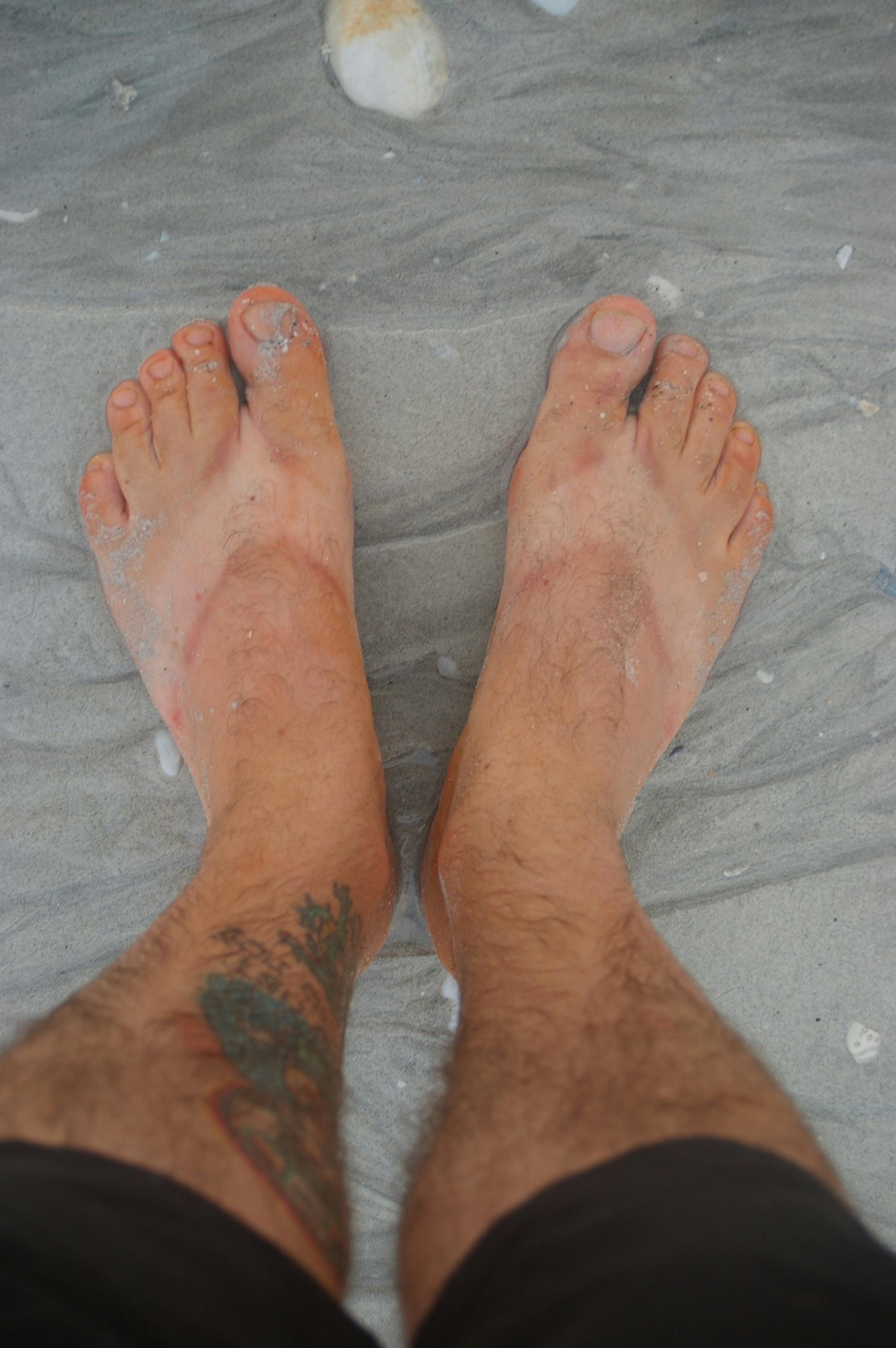20 Customer Service Plantar Fasciitis Treatment Methods
For some athletes, just changing running shoes can significantly alleviate plantar fascia pain. A physical therapist can employ a number of various taping techniques to support the plantar fascia, offering it an opportunity to recover. Some shoes can be fitted with inserts. One example is an orthotic, which spans the length of the shoe.
Another alternative is a heel cup. This insert is created to support and cushion the heel. Plantar fasciitis is related to less versatility in the ankle, Achilles tendon, and calf muscles. Gentle extending to improve versatility can make the biomechanics of standing, walking, and running less demanding for the plantar fascia.
Using gentle pressure, roll the tennis ball backward and forward under the foot. Stand 18 inches far from a wall with feet about 6 inches apart and place hands against the wall, at shoulder height. Without moving feet, lean into the wall, bending the foot and extending the Achilles tendon and calf muscles Sit on the floor with legs straight in front.
Why Good Customer Service Will Always Be a Part of Plantar Fasciitis Treatment
Stretches like these last 2, in which the top of the foot and toes approach the shin, are called dorsiflexion stretches. Using a cold-pack or bag of ice to bottom of the foot might offer pain relief from plantar fasciitis. Relief can also be discovered by rolling the bottom of the foot on a frozen plastic water bottle.
Procedure Concepts. For runners, increasing the variety of steps per mileusing a much shorter stride however increasing cadence to keep speedmay reduce the tension on the plantar fascia although there will be more steps per minute.1.Additional weight puts an increased strain on the plantar fascia tissue. Shedding excess pounds will lighten the load on the body's musculoskeletal system, consisting of the plantar fascia.
This avoids the plantar fascia from resting in a contracted position. (Understandably, lots of individuals discover these splints difficult to sleep in.). While it is not considered standard treatment, deep myofascial massage may promote blood flow and healing. While not all specialists concur, some think making use of manual manipulation/mobilization (by a chiropractor or other qualified health expert) along with workout is a reliable method to treat plantar fasciitis.2, Individuals with relentless, moderate to serious cases of plantar fasciitis, may use these non-medical treatments in conjunction with medications, injections, or surgical treatments.
Blogger's Plantar Fasciitis Treatment Guide for This Year

Medications are not a remedy for plantar fasciitis and need to be utilized in combination with other treatments. Non-steroidal anti-inflammatory drugs are utilized to reduce swelling and swelling, and are advised for patients experiencing moderate to serious discomfort (See Here). NSAIDs include aspirin (e.g. Bayer), ibuprofen (e.g. Advil), naproxen (e.g. Aleve), and cox-2 inhibitors.
dexamethasone) through healthy skin to the aching location.1 Iontophoresis may be recommended to clients with plantar fasciitis who can't tolerate injections or desire to avoid injections. If non-medical treatments and medications do not provide relief from plantar fasciitis, patients may think about injections. 1. Wellenkotter J, Kernozek TW, Meardon S, Suchomel T.

Int J Sports Medication. 2014; 35( 9 ):779 -84.2. Bronfort G, Haas M, Evans R, Leininger B, Triano J. Effectiveness of manual therapies: the UK evidence report. Chiropr Osteopat. 2010; 18:3.3. Clar C, Tsertsvadze A, Court R, Hundt GL, Clarke A, Sutcliffe P. Scientific effectiveness of manual treatment for the management of musculoskeletal and non-musculoskeletal conditions: methodical review and upgrade of UK evidence report.
Plantar Fasciitis Treatment Trends to Watch For
The plantar fascia is a long, thin ligament present along the bottom of the foot that creates the arch of the foot. It extends from the heel bone, and after that splits and fans out to attach itself to the toes. Plantar fasciitis is a condition where the plantar fascia ends up being irritated from overstretching or overuse, causing discomfort in the heel and bottom of the foot.
Plantar fasciitis occurs when you strain or aggravate the plantar fascia ligament. Repeated pressure can result in tiny tears in the ligament, resulting in pain and swelling, which can make walking tough. Stress can occur due to: High or low foot arch Obesity or sudden weight gain Tight Achilles tendon which connects the calf muscles to the heel Starting a brand-new activity or increasing the intensity of an activity Using inappropriate shoes with soles that are too soft, do not fit well or use bad arch support The major complaint of plantar fasciitis is discomfort and stiffness in the heel and foot.
Your medical professional may view how you stand and stroll, and evaluate associated conditions such as high arches. X-rays of the foot can be taken if your doctor suspects a stress fracture, a hairline fracture in the bone, or other related conditions such as a heel spur, which is additional calcium deposit on the heel bone.
Plantar Fasciitis Treatment Tips You May Have Missed
Conservative treatment steps consist of: Rest: Rest is the first action that is thought about for minimizing pain and avoiding additional damage to the ligament. Ice: Rolling your foot over ice can be extremely efficient in lowering swelling, and is recommended for 20 minutes, 3-4 times a day Medications: NSAIDs (non-steroidal anti-inflammatory drugs) might be recommended for relief of discomfort and inflammation Exercise: calf stretches and plantar fascia stretches work in eliminating pain A steroid injection might be administered into the plantar fascia for minimizing pain and swelling Helpful shoes and orthotics may likewise be advised to lower the discomfort while walking or standing Night splints can be recommended by your physician to help stretch the plantar fascia while sleeping Physical therapy may be advised for guideline on stretching workouts, massage and ice treatments PT might use extracorporeal shockwave treatment (ESWT), which utilizes high-energy shockwave impulses to stimulate healing of the damaged plantar fascia tissues Surgical treatment is thought about just if conservative therapy does not supply effective relief after 12 months.
Gastrocnemius economic crisis: Tight calf muscles or gastrocnemius muscles can strain the plantar fascia. To release this tension, your surgeon will surgically extend the calf muscle, and increase the motion of the ankle (This Post). The surgery can be carried out by open incision or endoscopically through a small incision by using an endoscope, which is a long instrument with a small video camera attached.
Your surgeon will partly cut the plantar fascia ligament to eliminate the tension. The surgery can be carried out endoscopically but open cut is much easier to carry out and is connected with lower risk of nerve damage. Issues are rare following surgical treatment to treat plantar fasciitis, but as with any surgical treatment, they can occur.
Diving into Plantar Fasciitis Treatment
If you are experiencing signs of plantar fasciitis, comprehensive treatment from our foot professionals is readily available at ORA Orthopedics. As the biggest and most sophisticated orthopedic practice in the Quad Cities, ORA Orthopedics uses the best choices in care to children and grownups with a broad array of musculoskeletal conditions, including plantar fasciitis and other uncomfortable or uncomfortable foot problems (Her Latest Blog).
This condition is normally marked by higher foot discomfort and tightness after not throughout workout or extended durations of lack of exercise. Plantar fasciitis may likewise trigger bone spurs, or little boney developments, to establish on the heel bone. The knowledgeable physicians and personnel at ORA Orthopedics' Foot and Ankle Center of Excellence are trained in the current treatment methods and use patient-focused care that is 2nd to none in the Quad Cities.
No comments:
Post a Comment